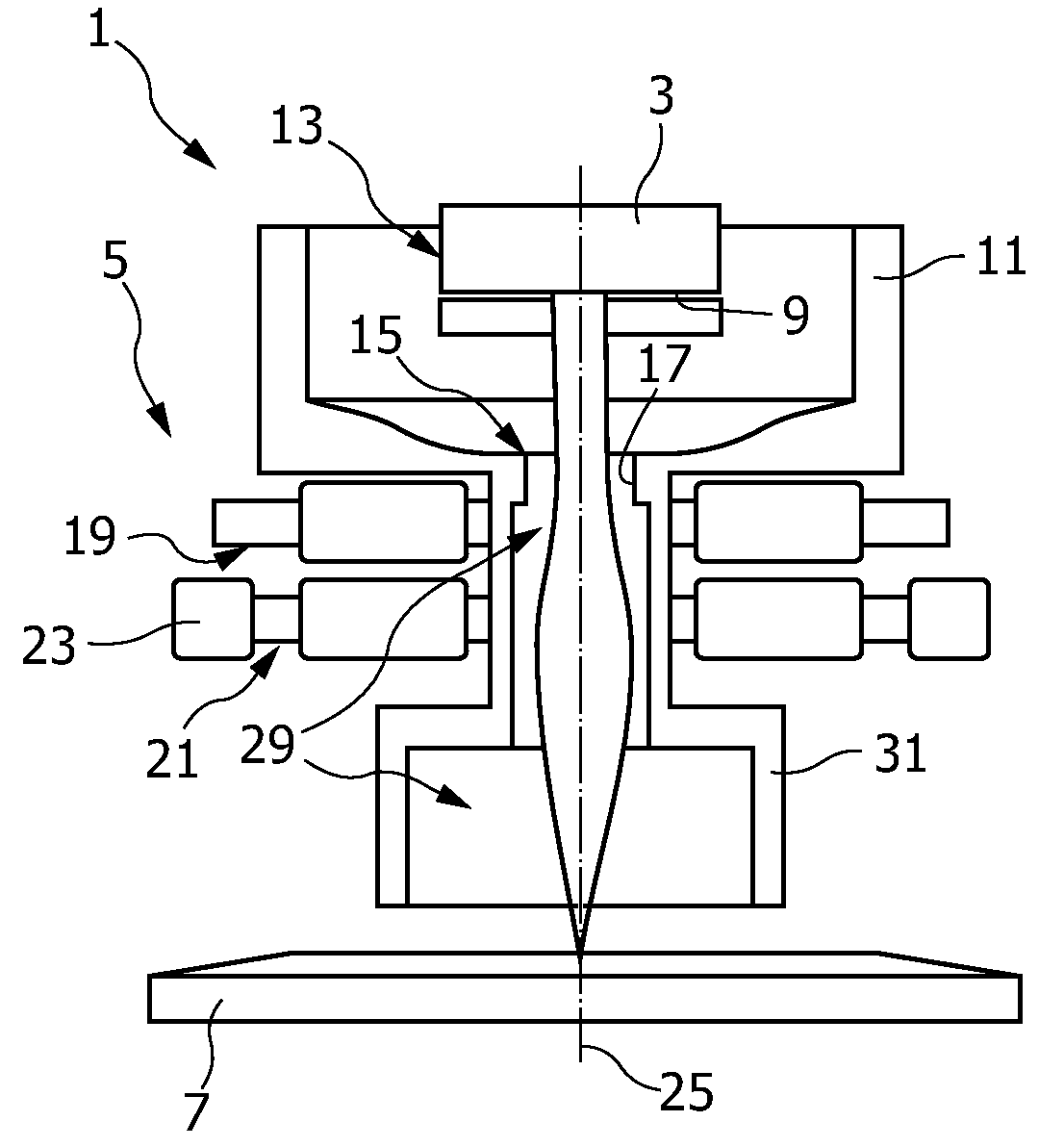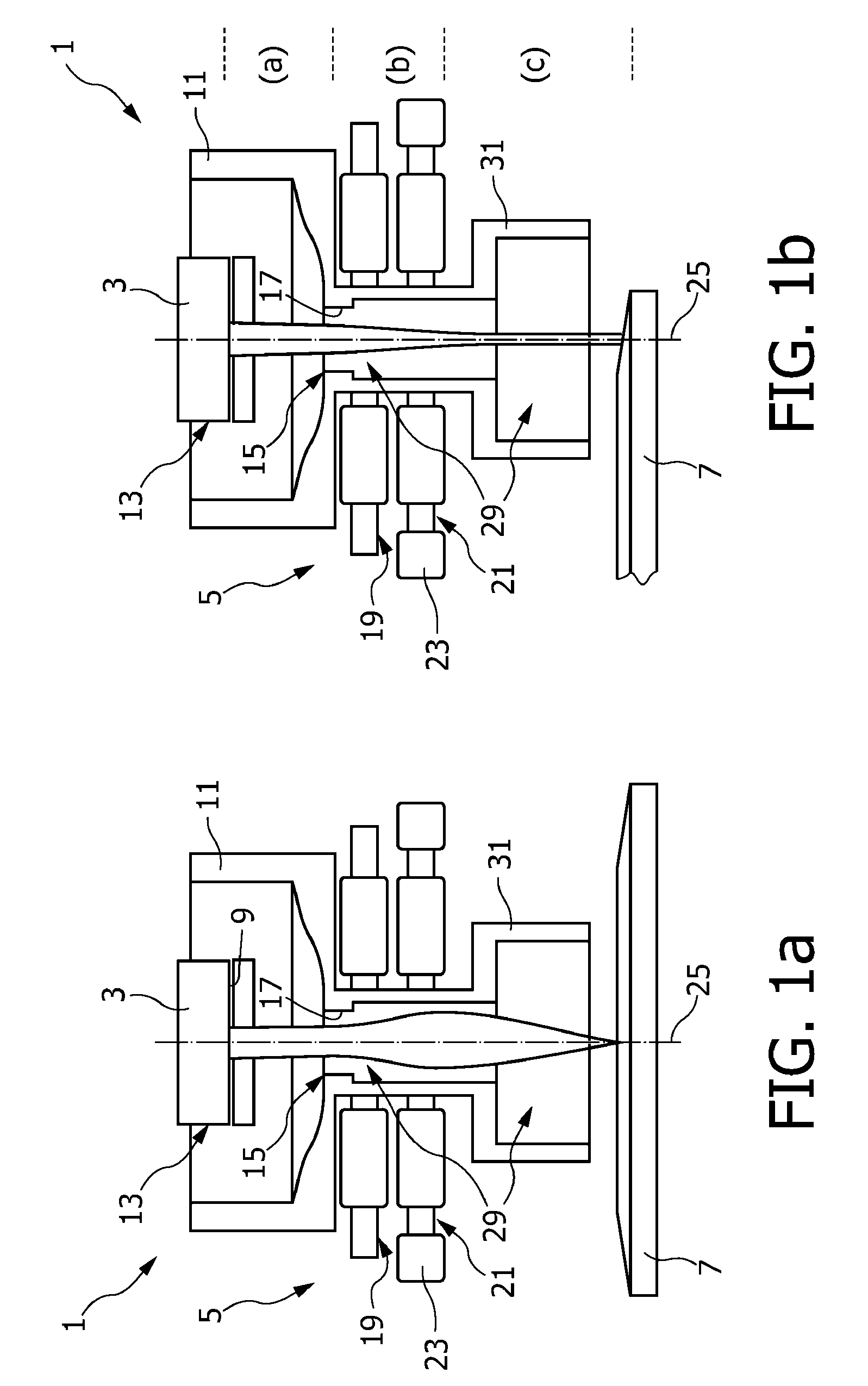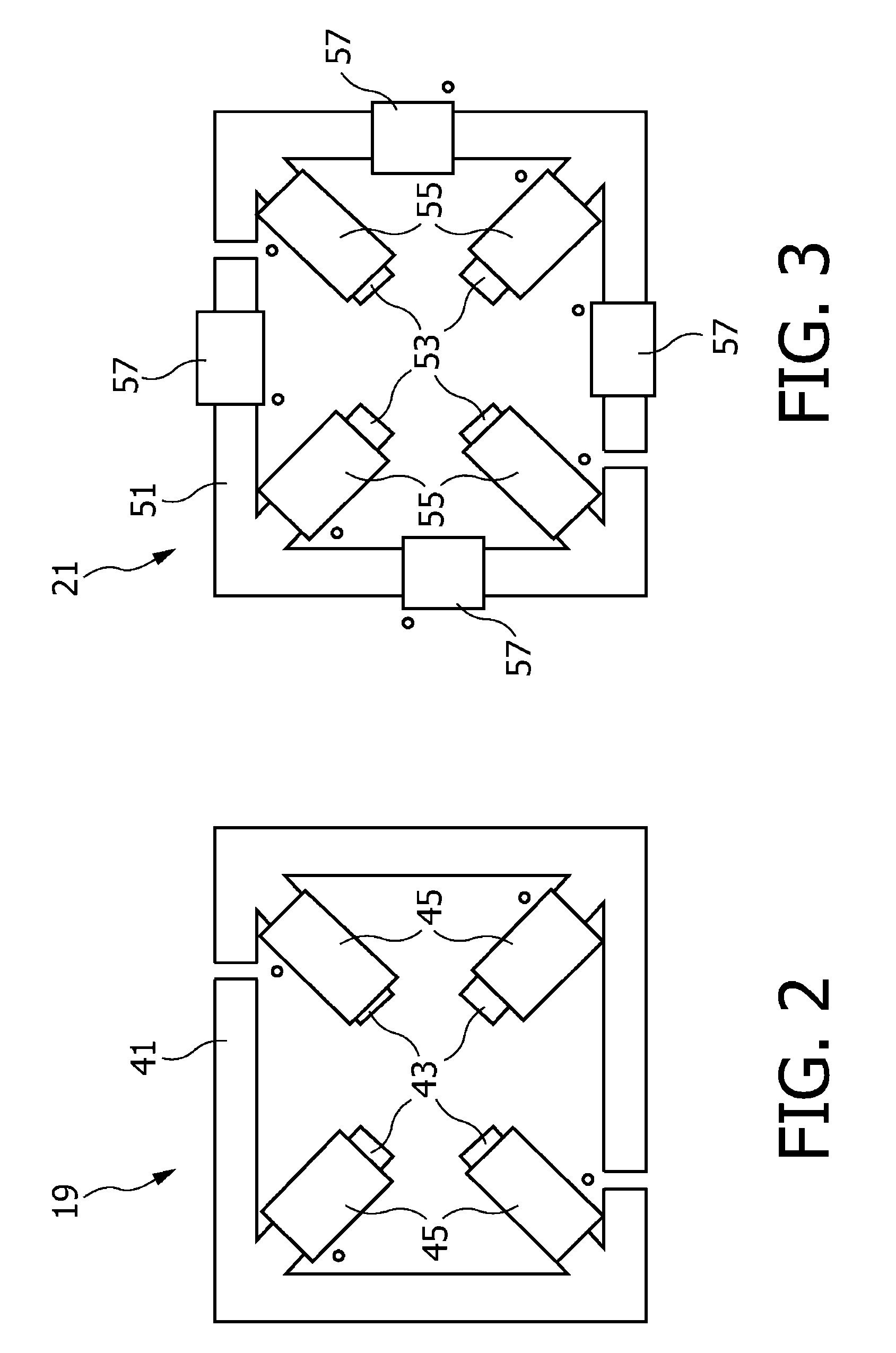Electron optical apparatus, X-ray emitting device and method of producing an electron beam
a technology of electron beam and optical apparatus, applied in the direction of electrical apparatus, x-ray tube details, electric discharge tubes, etc., can solve the problems of tube size limitation, achieve the effect of short length, save space, and improve the focus of electron beam
- Summary
- Abstract
- Description
- Claims
- Application Information
AI Technical Summary
Benefits of technology
Problems solved by technology
Method used
Image
Examples
Embodiment Construction
[0050]The illustration in the drawing is schematically. It is noted that in different figures, similar or identical elements are provided with the same reference signs or with reference signs, which are different from the corresponding reference signs only within the first digit.
[0051]Future X-ray medical examinations have sophisticated requirements on the spot sizes and shapes in combination with fast changes in positions. Due to the limitations in space of typically 130 mm in optical length and an optimal heat management by implementing a SEC, a much better electron optic than usually used in X-ray tubes is necessary.
[0052]FIGS. 1a and 1b show an embodiment of an X-ray emitting device 1 according to the invention. The proposed X-ray emitting device to reach the above requirements comprises a cathode with a flat emitter 3 as an electron source and a lens system 5.
[0053]The objective of spot control is to create a line focus (an elongated spot) on the slanted part of an anode disc 7...
PUM
 Login to View More
Login to View More Abstract
Description
Claims
Application Information
 Login to View More
Login to View More - R&D
- Intellectual Property
- Life Sciences
- Materials
- Tech Scout
- Unparalleled Data Quality
- Higher Quality Content
- 60% Fewer Hallucinations
Browse by: Latest US Patents, China's latest patents, Technical Efficacy Thesaurus, Application Domain, Technology Topic, Popular Technical Reports.
© 2025 PatSnap. All rights reserved.Legal|Privacy policy|Modern Slavery Act Transparency Statement|Sitemap|About US| Contact US: help@patsnap.com



